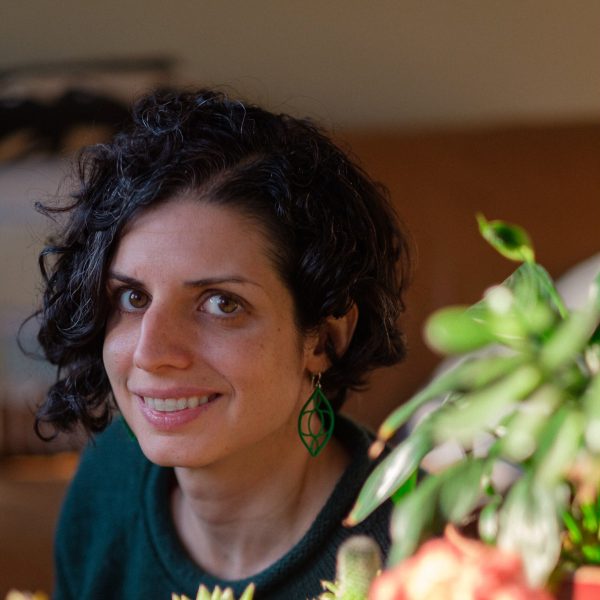During the BU Arts & Sciences strategic planning process, team teaching was identified as a powerful means to advance interdisciplinary teaching and curricular innovation within the College of Arts & Sciences. In 2023-2024, the college offered a pilot initiative to support the development of cutting-edge, co-taught, interdisciplinary courses
Two courses were offered: “Environmental Humanities and Society,” taught by Professor of English Adriana Craciun and Earth & Environment Senior Lecturer Caterina Scaramelli,” and “The Politics of Science, Care, and the Environment,” taught by Associate Professor of Earth & Environment Anne Short and Professor of Political Science and Women’s, Gender, & Sexuality Studies Lida Maxwell.

“These courses represent our commitment to leaning into and leveraging the intellectual and disciplinary diversity in the College, and really bringing that diversity to bear on our undergraduate curriculum in a concrete way,” said Joe Bizup, associate professor of English and associate dean of Undergraduate Academic Programs. “Students benefit from being exposed to the different perspectives, methods, and ways of thinking of their teachers, and the teachers benefit as well from the opportunity to work closely with colleagues whose backgrounds, training, and approaches to scholarship and teaching differ from their own.”
Below are reflections from the faculty members who taught the classes.

Anne Short Gianotti, associate professor, Earth & Environment
The Politics of Science, Care, and the Environment
Our course merged perspectives from political theory and human-environment geography to examine the entanglement of science—and ideas of objectivity—with feminist notions of care in the politics of environmental concerns. We brought distinct but overlapping expertise and interests to the course—Prof Maxwell is a political theorist and I am a human-environment geographer. These fields have different intellectual traditions and communities but overlap in many questions and concerns. Team teaching was both fun and generative; I grew in my knowledge—both subject wise and pedagogically—benefitting from seeing and participating in the sessions led by Prof Maxwell.
I think the students also benefited from our complementary expertise and teaching approaches. Despite the normal bumps of a new course, many students shared gratitude for the ways the class offered a new perspective on the environment. Specifically with team teaching, students appreciated the ways we were able to integrate our respective disciplines to push content forward. On the course evaluations, one student wrote: “The teaching team is actually interdisciplinary—rather than structuring a course with three random different–discipline experts, this course actually embodied ‘interdisciplinary’ learning because both professors were interested in engaging with interdisciplinary ideas.

Caterina Scaramelli, senior lecturer, Earth & Environment
Environmental Humanities and Society
Organizing the class around large conceptual blocks, and exploring different kinds of environmental humanities scholarships, approaches, and mediums within each has been one of the most successful aspect of this class, I think we have really modeled to the students how interdisciplinary inquiry on important questions of environmental stewardship, ethics, justice, and climate change can work. From my standpoint, I was awed by the students’ ability to be able to unpack how narratives, arguments, and aesthetics effects (and affects) are constructed, and to what end.
We co-conspired on crafting the key assignments for the class. One involved researching two pieces of journalistic reporting on an environmental issue and then analyzing how these were constructed… The second key assignment was a close observation of an individual, live organism—e.g. a weed growing near campus, a domestic dog, a bird nesting by a specific tree—done over a period of time, but expanding the classic fieldwork approaches used in the natural and social sciences to also ask for students self-reflectivity about how they were apprehending their subject, and using their own bodies, and ethos to get to another being’s way of life in an interconnected world. The final project work, which was my favorite for this course, was an exploration of a place… through eight images with a 200 words caption each. Four of these images were photos or drawings made by the students, and the other four were other kinds of image evidence—e.g. historic maps, postcards, historic photographs, advertisements. These nicely wove the different approaches, concepts, and themes of the class together!
Adriana and I have different lecture styles — she is so great at asking questions throughout her lectures, which generate class discussion, and get to her lecture argument, so that it appears to all have emerged from student conversation. She brings in a lot of the primary sources she works on—from eighteenth century botanical manuals to Arctic expedition journals, to her own interviews with seed bank scientists in Svalbard and arborists in Greenland. I keep learning a lot from her teaching persona! I tend to step in to teach the more ethnographic, anthropological content, and Adriana the more humanities and history of science related ones, but just as often we each teach one aspect and one approach to the same material, themes, and set of questions.